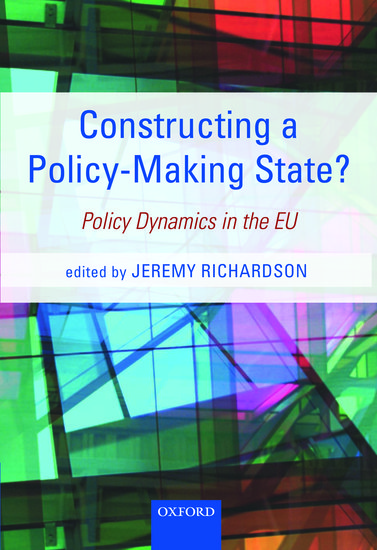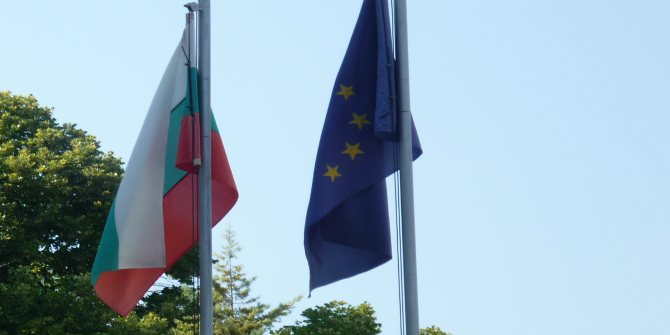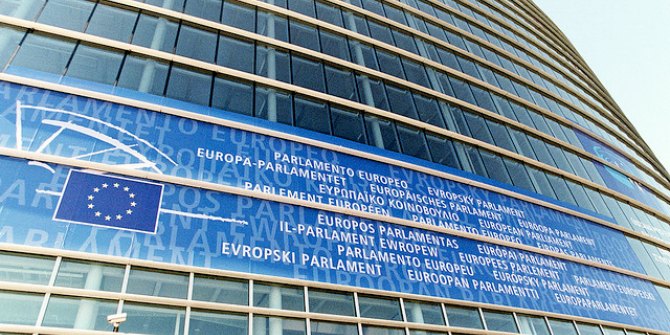 Constructing a Policy-Making State? sets out to examine the processes by which Europeanisation takes place: how are key decisions about public policies gradually transferred to the European level? The main focus is whether a European Union ‘policy-making state’ is being created via changes in the distribution of power between member states and the European level institutions over time. Pierpaolo Perna believes students and researchers will find much of use in the detailed case studies.
Constructing a Policy-Making State? sets out to examine the processes by which Europeanisation takes place: how are key decisions about public policies gradually transferred to the European level? The main focus is whether a European Union ‘policy-making state’ is being created via changes in the distribution of power between member states and the European level institutions over time. Pierpaolo Perna believes students and researchers will find much of use in the detailed case studies.

Constructing a Policy-Making State? Policy Dynamics in the EU. Edited by Jeremy Richardson. Oxford University Press. September 2012.
This book is an ambitious and comprehensive study on the European Union as a policy making actor. Since 2012, numerous political and economic events have rendered the issue a topical one. Electoral clashes between outward and inward looking policy stances, and EU-wide economic pressures have called for a historical reflection on the scope and effectiveness of Europeanisation processes. This can in turn contribute to an understanding of future institutional trajectories in the way European policies are designed and put in place.
From a theoretical standpoint, there are two foundational insights that run through this diverse set of case studies, which cover sectors which have yet to see very much Europeanisation such as health, to sectors such as competition policy, which are almost fully Europeanised. The first insight stems from a reversal in the traditional concept of Europeanisation. While this has often been described as a gradual process of mere adaptation of EU-level to domestic policy making, the book examines the extent to which key decisions are transferred from member states to European level institutions, causing a power shift which potentially redefines the EU as a political system. The book seems to suggest that, so far, the road leading to the construction of a European “policy state” has been bumpy, alternating expansionary periods with less encouraging setbacks. In this respect, the idea of “policy entrepreneurship”, emphasised by the editor Jeremy Richardson, offers an interesting aspect of interpretation to the book. This maybe of particular interest to those readers who seek to understand when and how policy inertia can be overcome to shift policy making processes to the EU level.
A number of case studies show the varying degrees of Europeanisation that have been achieved in recent history. For instance, competition has evolved over time as a truly supranational policy sphere. First, it starts by reviewing the functions of the agencies which are delegated decision making power over a policy area. Next, it describes the historical context in which the relevant European agencies developed. In the field of competition policy, for example, the Commission not only increased the frequency with which relevant secondary legislation was produced, but also expanded the scope of its activity to liberalisation, merger and aid control through the decades. The conclusive sections are the most intriguing and shed light on the latest policy trends, the greatest challenges and potentials for development.
Interestingly, the book also covers minor, lesser known aspects of European policy making. These can be of importance with a view to expanding the scope of EU level cooperation to new fields. Scott Greer’s chapter on healthcare policy shows, for example, the crucial role that member states maintain in shifting the necessary competences to the supranational level. This area has a marginal role in the bureaucratic structure of the European Union. For this reason, the author gives a mixed account of the Open Method of Coordination (OMC), which allows member states to discuss the quality and sustainability of healthcare services and agree long term policy goals. At the same time, he recognises that hard- law strategies may be even less effective when countries adopt a conservative approach rather than opening up towards common markets.
Notwithstanding the importance of these “extreme” cases, in which the degree of success of Europeanisation can be clearly established, other studies require more nuanced reviews. Occasionally, these chapters stress the importance of external events that shape the course of events. Dermot Hodson’s analysis of the macroeconomic policy-making architecture of the European and Monetary Union (EMU) shows both the hurdles and window of opportunities that political and economic change may bring about. Before the financial banking crisis that hit Europe in 2008, the problems of the existing fiscal and monetary institutions could not be overcome due to the presence of political inertia and narrow interests. The status quo provided a fragmented, not to say “paradoxical” picture. One the one hand, the EMU gave rise to the most important transfer of public policy to the EU level to date, which brought about common currency and monetary policy. On the other hand, as the chapter shows, member states maintained their de facto autonomy over economic policy design, which created an ambigous relationship between macroeconomic policy and Europeanisation processes. This exemplifies the puzzles that European public policy researches may have been confronted with over the last decades.
In conclusion, this book successfully attempts to illustrate the multi-faceted nature of Europeanisation processes in policy making. Due to its longitudinal structure, this work is suitable for two types of students and researchers. First, it meets the demands of those who are interested in specific policy areas, in that it provides extensive reviews of the salient policy episodes and compels the reader with insightful assessments, which make use of a variety of methodological approaches. More generally, it is addressed at those who want to gain insight into the “onward march of Europeanisation” and learn more about the possible opportunities and challenges that European policy makers will face in the future.
——————————————————–
Pierpaolo Perna is a MPA student in Public and Economic Policy at the LSE, having graduated with First Class Honours in Economics and Politics from the University of London. During his undergraduate studies, he took part in various economic research activities and was a visiting student at Peking University, China. His research interests include political economy, public and labour economics. Read more reviews by Pierpaolo.







